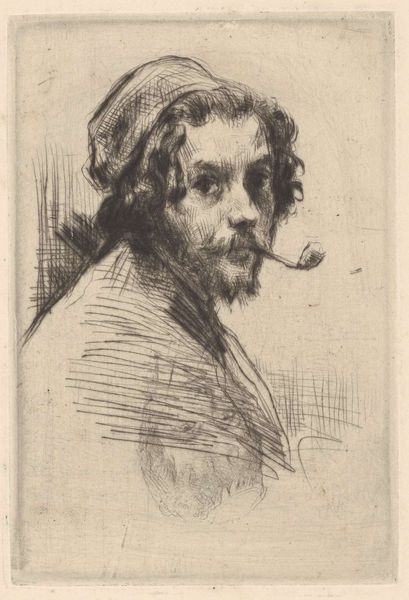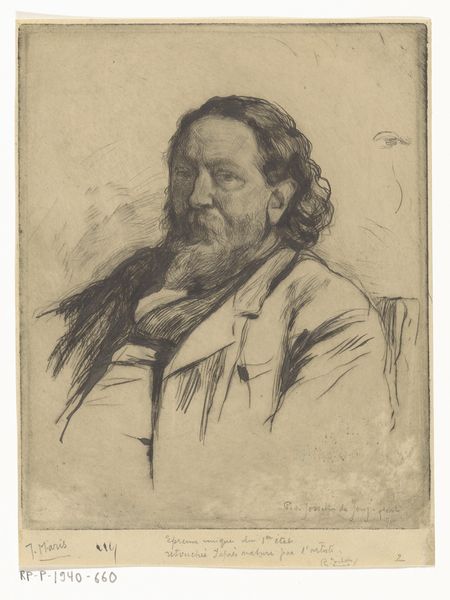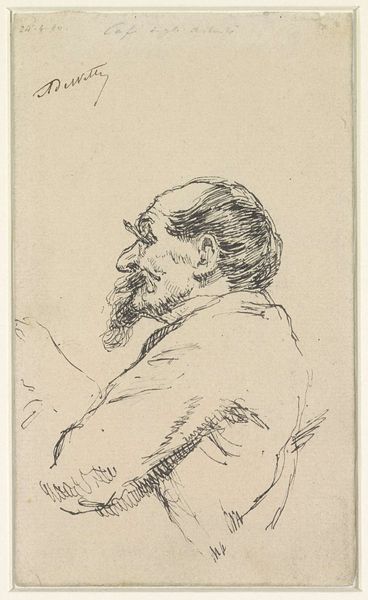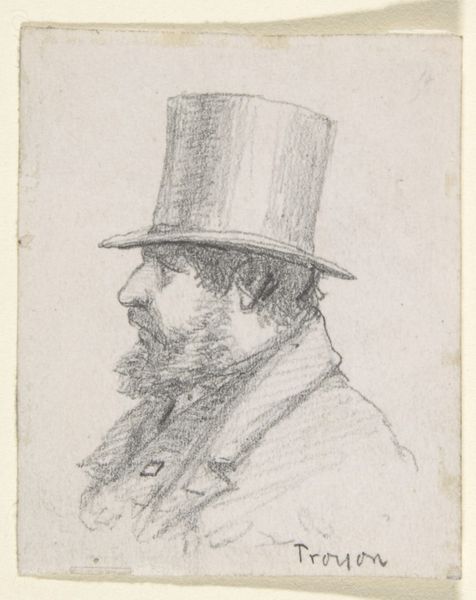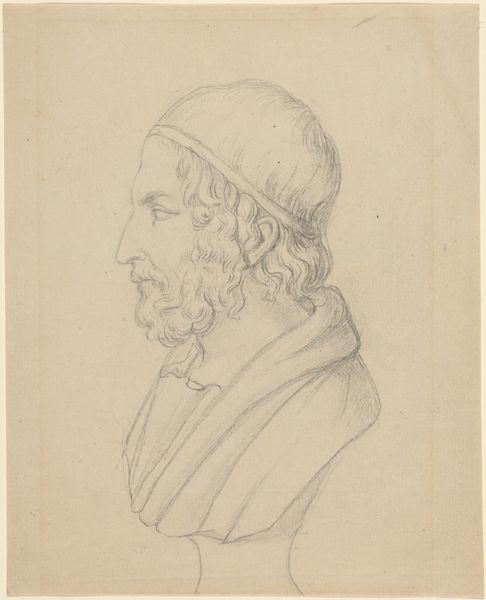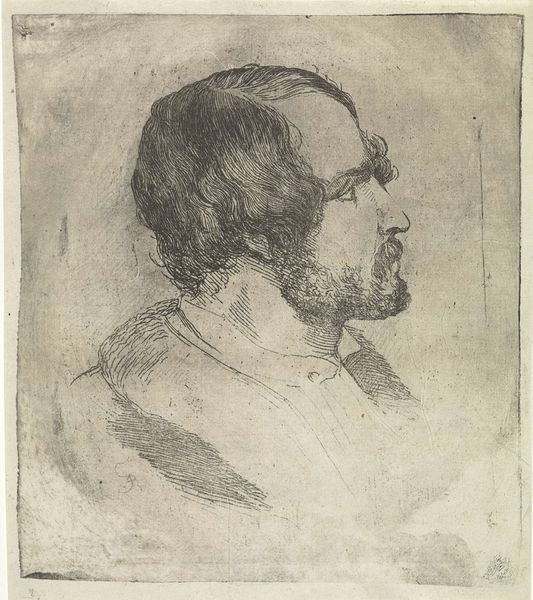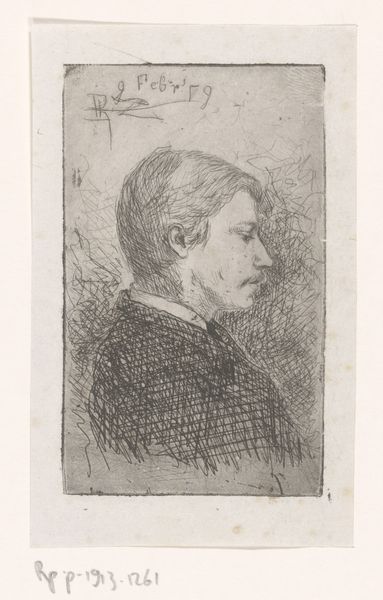
drawing, print, pencil
#
portrait
#
pencil drawn
#
drawing
# print
#
pencil drawing
#
pencil
Dimensions: sheet: 2 1/4 x 1 7/8 in. (5.7 x 4.8 cm)
Copyright: Public Domain
Curator: Standing before us, we have a 19th-century pencil drawing entitled "Portrait of Merle," currently held here at the Metropolitan Museum of Art. Editor: My first thought is, what a wonderfully intimate glimpse. The sketchiness almost makes him feel alive, like he might turn his head at any moment. It’s far from formal, yet…refined. Curator: Indeed. Its informality grants a peculiar access. It certainly aligns with the burgeoning Realist portraiture tradition where honesty and directness were starting to take precedent over idealized depictions of social status. Pencil, as a readily available medium, encouraged that sense of immediacy and individual expression. Editor: And Merle himself… what do we make of him? The beard, the hair… they point toward a specific masculine ideal that was being crafted in artistic circles, I think. There's something almost intentionally "bohemian" about it. Perhaps projecting? Or a visual assertion of his identity? Curator: Undoubtedly a statement. We are so conditioned to see images where beards and hairstyles become cultural identifiers. The way the pencil strokes define the planes of his face are subtle, but carry so much emotive information – his gaze is introspective and calm. What of Merle the person, I wonder, removed from the portrait; and why sketch and not formal oil, if social stature and historical documentation were not as significant to either subject or artist? Editor: And that’s where my curiosity takes hold, isn’t it? Beyond just visual culture, I’d love to explore more fully how artistic identity intersects with politics. In an era where portraiture still functioned as a signifier of status, his choice, or that of the artist, speaks volumes. This pencil study serves as an accessible image for an era, and this subject; to look not down to the commoners, but be of and for them. Curator: It feels as if this simple pencil has captured not just a likeness, but a whole changing world of new symbolic conventions. Editor: Exactly. And for me, that's where the enduring fascination lies – connecting what is visually right in front of us to everything else in its time and since.
Comments
No comments
Be the first to comment and join the conversation on the ultimate creative platform.



